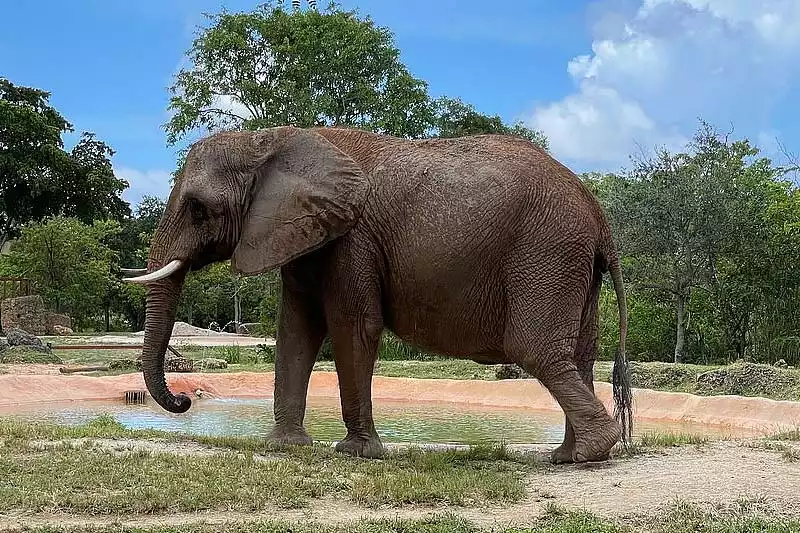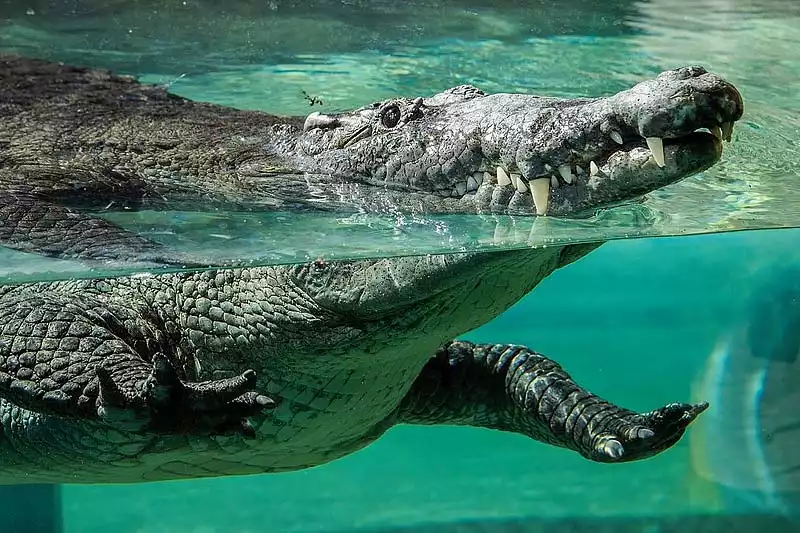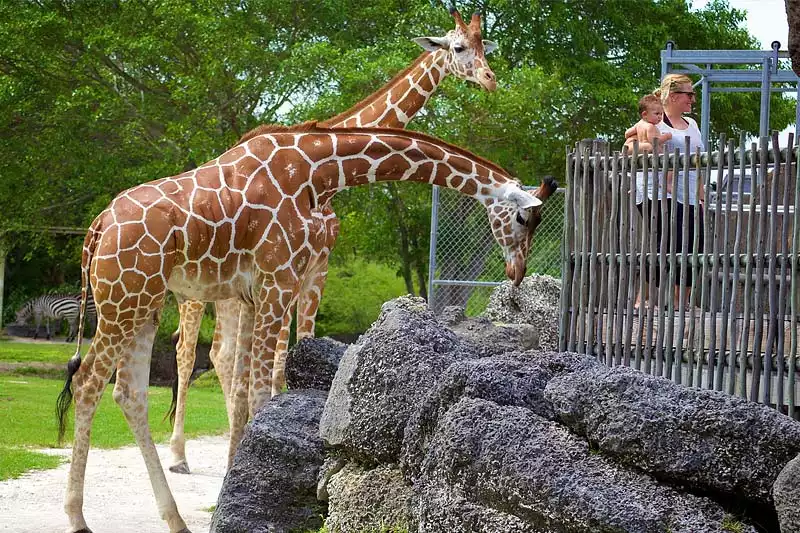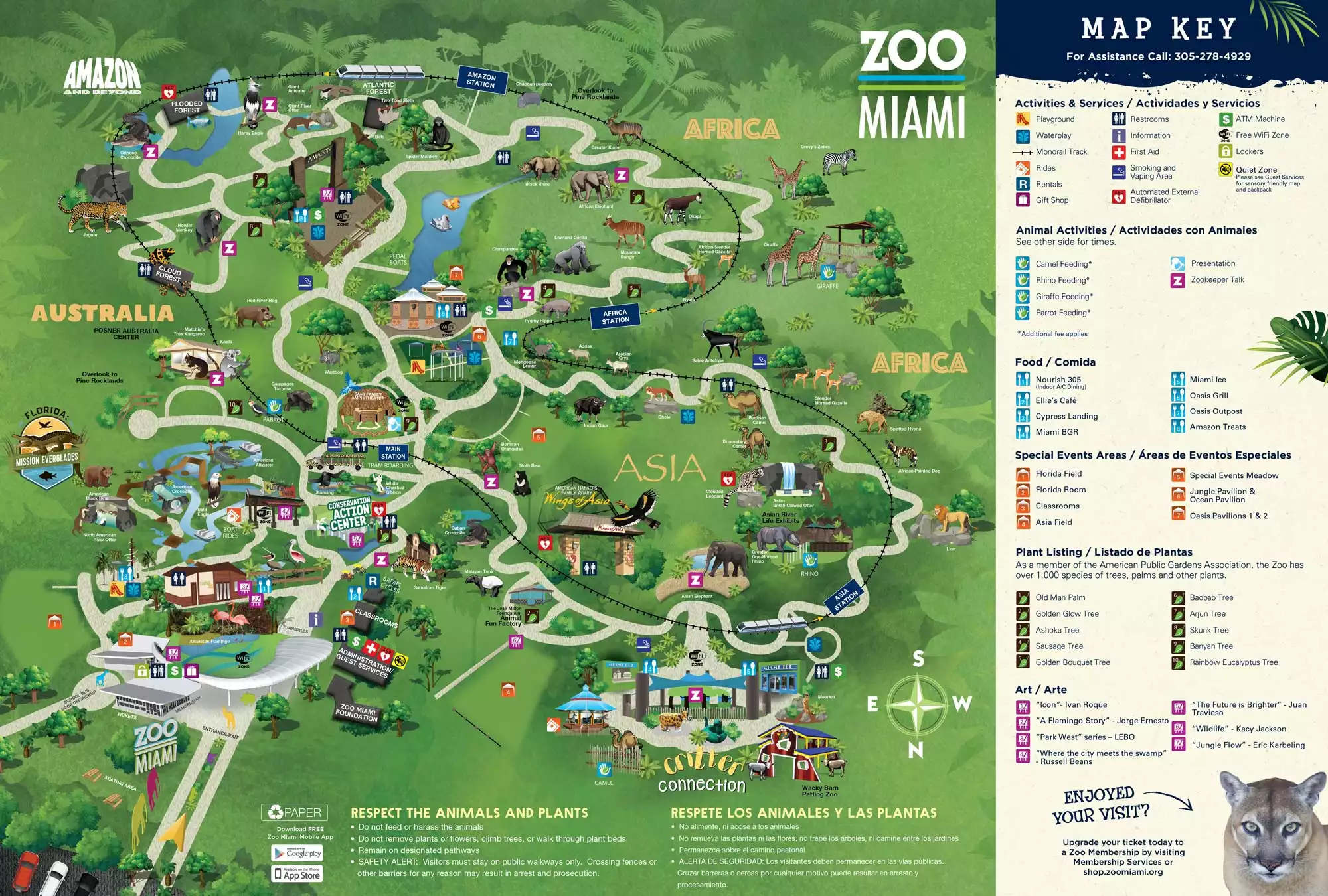- Miami Zoo Animals and Habitats
- Animal Encounters and Feedings
- Other Attractions in Miami Zoo
- Opening Hours of Zoo Miami
- Best Time to Go
- Where and How to Get to Zoo Miami?
- FAQs
- What is unique about Zoo Miami's exhibits?
- Can I see marine life at Zoo Miami?
- Are there educational programs available at Zoo Miami?
- What facilities are available at Zoo Miami?
- Are there any new exhibits at Zoo Miami?
Miami Zoo: A Wild Adventure in the Sunshine State
Are you ready to embark on an unforgettable journey through the heart of Miami’s wildlife? Welcome to the enchanting world of Zoo Miami, where each step unfolds a new story and every corner hides a wild adventure.
This isn’t just any ordinary zoo; it’s a vibrant, living tapestry of nature’s wonders right in Miami, waiting to be discovered by you. Dive into this blog and uncover the secrets of Zoo Miami, a place where every visit is more than just a walk in the park.
Zoo Miami, also known as the Miami-Dade Zoological Park and Gardens, holds a prominent position as one of the largest and oldest zoos in Florida. Spanning over 750 acres, it is home to more than 3,000 animals from around the globe, representing over 500 different species.
Since its inception in 1948, Zoo Miami has played a vital role in wildlife conservation and education, while continually striving to provide an unforgettable experience for visitors.
The zoo’s unique design, which emulates natural habitats and offers spacious, cage-free environments, is a testament to its commitment to animal welfare and its goal of fostering a deeper understanding of and appreciation for the natural world.
Miami Zoo Animals and Habitats
The zoo showcases a remarkable variety of animals and habitats, offering visitors the opportunity to explore and learn about wildlife from different regions of the world. The zoo is organized into several themed areas, each representing a unique geographic zone and its native species:
- Asia: In the Asian exhibit, you’ll encounter animal in the zoo like the orangutan, Malayan tiger, Indian rhinoceros, Asian small-clawed otter, and Komodo dragon, among others. The exhibit replicates the diverse landscapes of Asia, from lush forests to riverbanks. It also features the Asian river habitats and exotic birds, showcasing around 500 species including the majestic harpy eagles.
- Africa: The African exhibit is home to a wide range of iconic species, including giraffes, lions, elephants, meerkats, and gorillas. Visitors can experience the African savanna, rainforests, and other habitats that showcase the continent’s rich biodiversity. Here, one can also observe the African elephants and the elusive bengal (assuming a reference to the Bengal tiger).

- Amazon and Beyond: This exhibit focuses on the fauna and flora of Central and South America, particularly the Amazon Rainforest. You’ll find animals such as jaguars, anacondas, giant river otters, and the endangered golden lion tamarin, as well as various bird and reptile species. This area also includes a tropical zoo, home to fruit bats and a variety of amphibian and snake species.
- Australia: The Australian exhibit features animals native to the continent and its surrounding islands, such as kangaroos, koalas, wallabies, and cassowaries. The exhibit highlights the unique ecosystems and habitats of Australia, from its arid Outback to lush rainforests.
- Florida: The Florida exhibit showcases local wildlife, including the American alligator, Florida panther, cuban crocodiles, and various bird species like pelicans. The exhibit emphasizes the importance of preserving Florida’s native ecosystems and the diverse wildlife that calls the state home.

Animal Encounters and Feedings
The zoo offers a range of unique animal encounters and feedings that provide visitors with a more interactive and engaging experience. Some popular options include:
- Giraffe Feeding: Visitors have the opportunity to get up close and personal with these gentle giants and feed them from an elevated platform. This memorable experience allows guests to observe giraffes’ unique features, such as their long necks and prehensile tongues, while learning more about these fascinating animals.

- Rhinoceros Encounter: This interactive experience lets guests meet a greater one-horned rhinoceros up close under the supervision of zoo staff. Participants have a chance to touch and learn about these magnificent animals while also gaining insights into their conservation efforts to protect them.
- Camel Feeding: Visitors can also participate in camel rides and feedings, where they’ll have the chance to interact with these remarkable animals and learn more about their adaptations and natural history.
- Monkey Jungle: An exciting area where visitors can observe and learn about different species of monkeys in a setting that mimics their natural habitat.
- Wings of Asia: This exhibit showcases a diverse collection of Asian bird species, offering an immersive experience in a beautifully landscaped aviary.
- Parrot Feeding: This interactive activity allows guests to hand-feed beautiful and colorful parrots, creating a special bond with these intelligent birds.
- Wildlife Carousel: While not an animal encounter or feeding, the Wildlife Carousel is a popular attraction for children, featuring beautifully crafted, hand-painted animal in the zoo figures. Riding the carousel not only delights young visitors but also contributes to wildlife conservation, as proceeds from the ride support the zoo’s conservation projects.
Please note that some of these experiences may require additional fees and availability may vary depending on the day or season. For all the details you may need, please visit their website for up-to-date information.
Other Attractions in Miami Zoo
At the zoo, visitors can enjoy various attractions that provide unique ways to explore the zoo and its inhabitants:
- Lostman’s River Ride: This relaxing boat ride takes guests on a winding journey through a tropical river, offering an opportunity to see various animals in their habitats and enjoy the lush surroundings. The ride is perfect for families and visitors of all ages.

- Pedal Boats: For a more interactive experience, visitors can rent pedal boats and navigate the waters of the zoo’s lake. The pedal boats provide a fun and leisurely way to take in the beautiful scenery while enjoying some light exercise.
- Safari Tram Tours: These guided tours aboard comfortable, open-air trams provide visitors with an informative and engaging way to explore the zoo. The tours offer insights into the animals, their habitats, and conservation efforts while allowing guests to cover more ground in a shorter time. The Safari Tram Tours are an excellent option for those who prefer a guided experience or have limited mobility.
These attractions offer unique experiences and allow visitors to make the most of their time while exploring the park from different perspectives.
Opening Hours of Zoo Miami
Zoo Miami operates daily with typical opening hours from 10:00 a.m. to 5:00 p.m., and the last admission is at 4:00 p.m., ensuring visitors have ample time to enjoy the exhibits. These hours are consistent throughout the year, with the exception of Thanksgiving Day and Christmas Day when the zoo is closed.
However, it’s important to note that opening hours can vary due to special events, seasonal activities, or other factors. Therefore, visitors are highly recommended to check the zoo’s official website or contact them directly for the most current information on hours of operation before planning their visit.
Best Time to Go
The great time to visit is during the cooler months, from November to April, when the weather is more comfortable for exploring the zoo’s vast outdoor spaces.
Early mornings and weekdays are usually less crowded, giving you a more leisurely experience. Additionally, visiting during the off-peak season (September to November) might result in fewer crowds and shorter lines.

Where and How to Get to Zoo Miami?
The zoo is located at 12400 SW 152nd St, Miami, FL 33177, USA. To get to here, you can use various modes of transportation:
- By Car: If you’re driving, take the Florida Turnpike (also known as the Ronald Reagan Turnpike) to exit 16 (SW 152 St). Head west on SW 152 St, and you’ll find the entrance just a few miles down the road. There is ample parking available at the zoo.
- Public Transportation: Zoo Miami is accessible via public transportation. Visitors can take the Metrobus, which has several routes stopping near the zoo. For those driving, the zoo is located in South Florida, near Richmond Heights. Parking is available, and the zoo is also a short drive from Downtown Miami and Miami Beach.
- Ride-hailing services: Companies like Uber and Lyft operate in the Miami area, making it easy to book a ride directly here. Input the zoo’s address into the app and request a ride from your location.
To make your visit to Zoo Miami more convenient, consider purchasing your tickets online before your arrival. This can save time and help you avoid potential lines at the entrance.
Annual passes are also available for those who plan to visit the zoo multiple times a year or wish to support the zoo’s conservation efforts.
FAQs
What is unique about Zoo Miami’s exhibits?
Zoo Miami’s exhibits are renowned for their spacious, open-air enclosures that mimic natural habitats, promoting the well-being of the animals. The zoo features over 100 exhibits with a variety of species, including rare and endangered animals like the Matschie’s tree kangaroo and Cuban crocodiles. It’s also known for its ‘Wings of Asia’ aviary, housing many Asian bird species.
Can I see marine life at Zoo Miami?
While Zoo Miami primarily focuses on terrestrial animals, visitors can explore nearby attractions for marine wildlife experiences. The Miami Seaquarium, located close to the zoo, offers encounters with marine animals like dolphins and seals. Additionally, Jungle Island, another nearby attraction, showcases a variety of animal species including some aquatic ones.
Are there educational programs available at Zoo Miami?
Zoo Miami offers a range of educational programs aimed at all age groups. These programs are designed to promote wildlife conservation through interactive learning experiences. The zoo works closely with the Association of Zoos and Aquariums (AZA) to ensure high-quality educational content, including hands-on animal encounters and guided tours.
What facilities are available at Zoo Miami?
Zoo Miami offers a variety of visitor amenities, including air-conditioned buildings, a monorail system for easy transportation around the zoo, a variety of dining options, and a petting zoo for children. The zoo also has pathways that are wheelchair accessible, ensuring a comfortable experience for all visitors.
Are there any new exhibits at Zoo Miami?
Zoo Miami continually updates and adds new exhibits to enhance the visitor experience. Recent additions include Mission Everglades, which focuses on local Florida wildlife and ecosystems. The zoo also plans to introduce new exhibits and conservation initiatives, reflecting its commitment to wildlife preservation and education.
Nearby Attractions
If you have more time to explore the Miami area after visiting Miami Zoo, there are several other attractions worth checking out.
- Nature lovers can head to the nearby Everglades National Park for a unique adventure through the largest subtropical wilderness in the United States, where you can spot alligators, birds, and other wildlife on an airboat tour.
- For those interested in art and culture, Wynwood Walls offers an immersive outdoor gallery of colorful murals and street art.
- History buffs can visit the Vizcaya Museum and Gardens, a stunning estate with beautiful architecture, European-style gardens, and a fascinating collection of art and antiques.
- Finally, Miami’s beautiful beaches, such as South Beach and Key Biscayne, offer a relaxing and enjoyable seaside experience, where visitors can soak up the sun, swim, or partake in various water sports.
Conclusion
In conclusion, a visit to Zoo Miami is a truly memorable experience for people of all ages. With its diverse array of exotic animals, immersive habitats, and engaging activities, the zoo offers something for everyone to enjoy.
Not only does a visit to Zoo Miami grant you an intimate encounter with the wonders of nature, but it also enables you to actively contribute to vital conservation initiatives aimed at safeguarding these remarkable animals and their environments for future generations to cherish.












